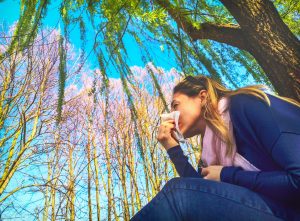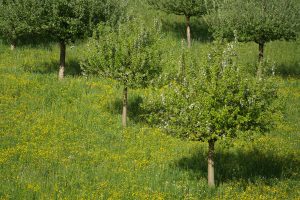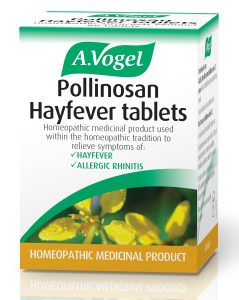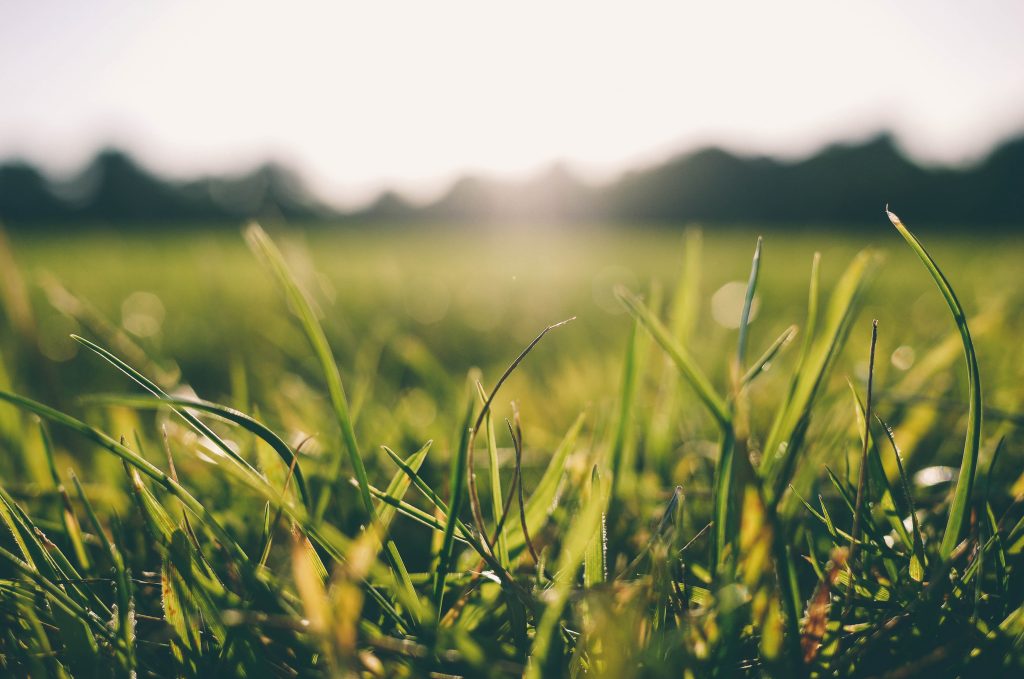If you suffer with hayfever, any enthusiasm for the soaring May temperatures we’ve been promised, may be somewhat dampened.
 An allergic reaction such as hayfever can be explained as an excessive reaction to a normally harmless substance, in this instance, pollen. The immune system identifies pollen as dangerous, and produces an antibody called IgE, which triggers the production of histamine. Histamine is an inflammatory chemical that causes an array of unpleasant symptoms, including running nose and eyes, itching and burning in localised areas such as in the throat, nose and eyes, puffiness, swelling and mucus formation. Altogether not much fun for the 20% of people estimated to have hayfever.
An allergic reaction such as hayfever can be explained as an excessive reaction to a normally harmless substance, in this instance, pollen. The immune system identifies pollen as dangerous, and produces an antibody called IgE, which triggers the production of histamine. Histamine is an inflammatory chemical that causes an array of unpleasant symptoms, including running nose and eyes, itching and burning in localised areas such as in the throat, nose and eyes, puffiness, swelling and mucus formation. Altogether not much fun for the 20% of people estimated to have hayfever.
 Tree pollen occurs first, typically from now until mid-May, and affects around 25% of the population, but it’s grass pollen that’s by far the biggest trigger, affecting up to 95% of hayfever sufferers. It tends to do the rounds from May to July, overlapping slightly with weed pollen, which can be released at any time, but is typically most prevalent from the end of June into September.
Tree pollen occurs first, typically from now until mid-May, and affects around 25% of the population, but it’s grass pollen that’s by far the biggest trigger, affecting up to 95% of hayfever sufferers. It tends to do the rounds from May to July, overlapping slightly with weed pollen, which can be released at any time, but is typically most prevalent from the end of June into September.
Added to the staggered nature of the season, your postcode will also determine when you’re likely to be affected. Generally there’s a later start and shorter season in the north of the country, where there tends to be less pollen. Urban areas also have lower counts than the countryside, but arguably there are other airborne irritants to contend with.
What’s the take-home? Pollen pretty much has its bases covered from March through to September, BUT, if you are prone to hayfever, there are a number of measures you can take to stay one step ahead.
Firstly, do your homework. Stay up-to-date with the latest pollen information in your local area by checking your 5-day pollen forecast. You can tailor your results to where you live, and also pollen count according to type (tree, grass) if you know what pollen type you’re allergic to.
 You’ll also want to keep your body as free from toxins as possible by avoiding junk and eating wholefoods. Keep your caffeine and alcohol intake low and avoid nicotine. If you live in a polluted area or work with chemicals or in traffic-ridden areas, regular detoxes to keep your system clear will help. Simple steps such as drinking plenty of water and keeping your bowel moving daily will reduce the toxic load on your system.
You’ll also want to keep your body as free from toxins as possible by avoiding junk and eating wholefoods. Keep your caffeine and alcohol intake low and avoid nicotine. If you live in a polluted area or work with chemicals or in traffic-ridden areas, regular detoxes to keep your system clear will help. Simple steps such as drinking plenty of water and keeping your bowel moving daily will reduce the toxic load on your system.
Avoid dairy foods as they cause mucus formation that can exacerbate hayfever symptoms, and keep your intake of refined sugar low. If you suffer with any type of allergy, hayfever included, you’re more likely to have wobbly blood sugar and be sensitive to refined sugar. Sugar can trigger surges and drops in blood sugar levels that cause adrenalin production to kick in, which involves the production of histamine – just what you don’t want.
Make sure you’re sleeping well. Whilst scientists are still trying to figure out the exact relationship between sleep and the immune system, studies show that sleep helps to shift the balance of anti-inflammatory proteins so that the immune system can recognise and respond better to bugs and allergens, which may help to reduce the severity of your symptoms.
 Plant remedies can also help. Approximately two weeks before your usual symptoms kick in, take Luffa operculata twice daily. Pollinosan Hayfever Tablets contain seven tropical herbs, including Luffa operculata and Galphimia glauca, to help with allergy to grass and tree pollen. They are non-drowsy and so will not affect your ability to drive or use machinery. If your eyes are particularly sensitive to hayfever try Pollinosan Hayfever Eye Drops. With hyaluronic acid and chamomile, they provide a soothing solution for red, itchy eyes as a result of hayfever-causing allergens, and can be used with contact lenses and glasses. A nasal spray is also available for immediate relief from symptoms, such as runny nose, itchy nose, and nasal congestion due to hayfever and allergy.
Plant remedies can also help. Approximately two weeks before your usual symptoms kick in, take Luffa operculata twice daily. Pollinosan Hayfever Tablets contain seven tropical herbs, including Luffa operculata and Galphimia glauca, to help with allergy to grass and tree pollen. They are non-drowsy and so will not affect your ability to drive or use machinery. If your eyes are particularly sensitive to hayfever try Pollinosan Hayfever Eye Drops. With hyaluronic acid and chamomile, they provide a soothing solution for red, itchy eyes as a result of hayfever-causing allergens, and can be used with contact lenses and glasses. A nasal spray is also available for immediate relief from symptoms, such as runny nose, itchy nose, and nasal congestion due to hayfever and allergy.
For further information on hayfever and allergy, visit Jay Thankey at Natural Health, 339 Ballards Lane, North Finchley, or call 020 8445 4397.


